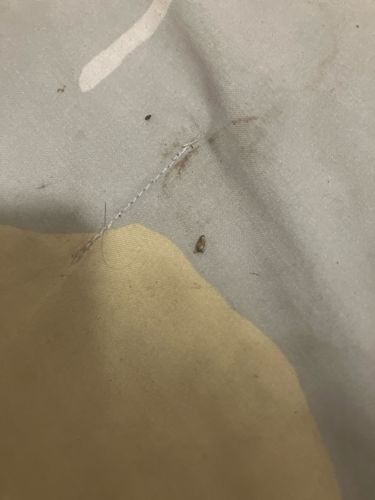Bed Bug
Scientific Name: Cimex lectularius
Order & Family: Hemiptera (true bugs), Cimicidae (bed bug family)
Size: Adults typically 4-5 mm (about 3/16 inch) long; nymphs are smaller.

Natural Habitat
Primarily human dwellings, especially bedrooms; they hide in cracks and crevices in mattresses, bed frames, furniture, walls, and flooring.
Diet & Feeding
Exclusively feed on the blood of warm-blooded animals, primarily humans. They are nocturnal feeders.
Behavior Patterns
Nocturnal, hiding during the day and emerging at night to feed. They are attracted to carbon dioxide and body heat. They can live for several months without a blood meal. Females lay 1-5 eggs per day, gluing them to surfaces.
Risks & Benefits
Potential risks include itchy red welts from bites, allergic reactions in some individuals, secondary skin infections from scratching, and psychological distress (anxiety, insomnia). They are not known to transmit diseases to humans. There are no known benefits.
Identified on: 10/28/2025